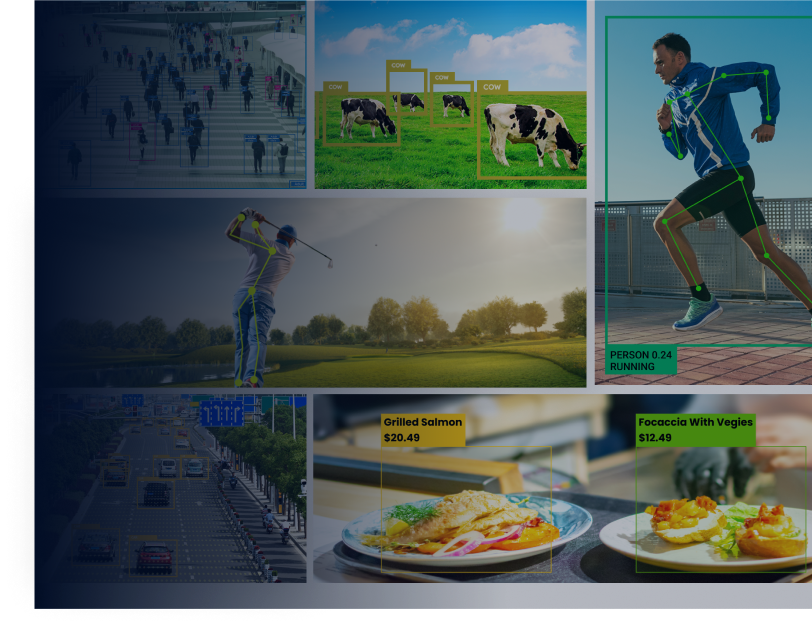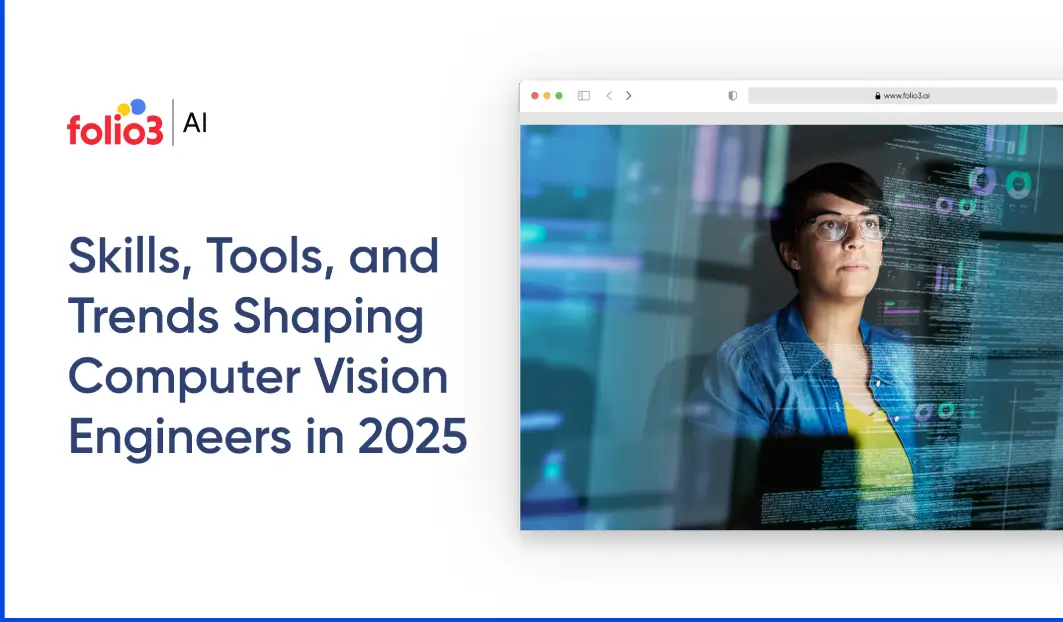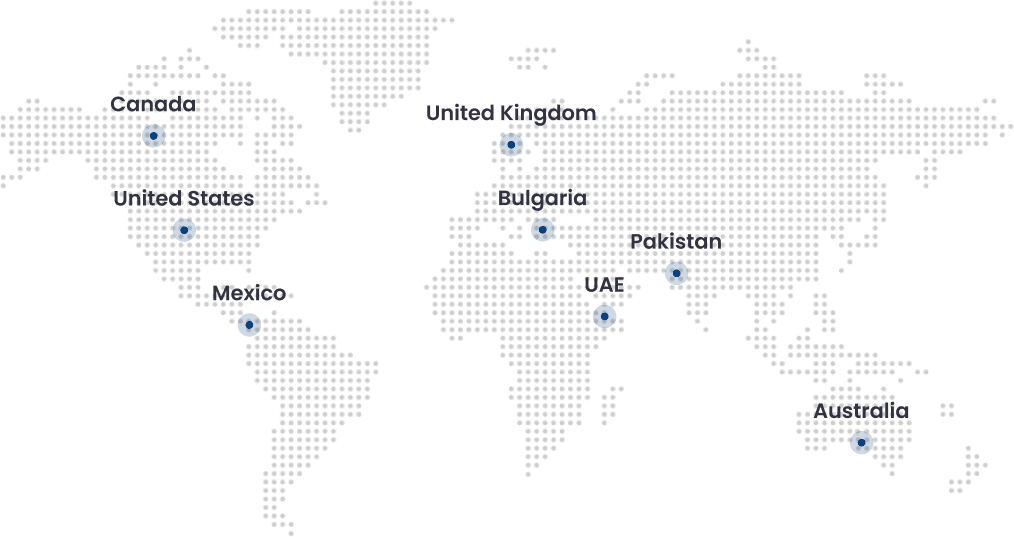Computer vision engineers are machine learning and AI experts who help computers interpret and learn from visual data, such as images and videos. They create and improve models that let computers recognize images, detect objects, and analyze videos. They often use deep learning techniques to make these models as accurate and efficient as possible.
Most of their work involves handling massive raw data, organizing and labeling it, and ensuring the data is high-quality for training. In short, they build systems that allow computers to “see” and visually make sense of the world.
Computer vision engineers must continue progressing as demand for real-time visual data escalated in industries like healthcare and autonomous vehicles. This blog covers the skills, tools, and trends shaping their roles in 2025.
What are Computer Vision Engineers?
Computer vision engineers create algorithms and models that help computers understand visual data, such as images and videos. They work with large datasets to perform tasks like object detection and image recognition. Computer vision engineers also have to do extensive research, develop new methods, and apply their findings to build machine learning systems that solve real-world problems. For that, these engineers often collaborate with other experts to create both hardware and software solutions that use visual data to complete specific tasks.
What Computer Vision Engineers Do?
A computer vision engineer uses math, especially linear algebra and calculus, along with machine learning and deep learning, to build systems that analyze images and videos. They write code in Python, C++, or Java and use computer vision libraries to process visual data. Their work is preeminent in industries like healthcare, where accuracy is valuable and systems need to handle large amounts of data efficiently.
Computer Vision Engineers work closely with other tech professionals to enhance the systems they create. This includes troubleshooting, refining algorithms, and integrating new tech into existing platforms. While some focus on research to push the field forward, most are focused on applying computer vision to solve complex problems. To succeed in computer vision projects, they need strong programming skills, sharp analytical thinking, and the ability to collaborate effectively with their team to turn ideas into practical solutions.
Their responsibilities typically include:
- Algorithm Development: Creating and optimizing algorithms for image processing, object detection, recognition, and tracking.
- Machine Learning: Implementing machine learning techniques, especially deep learning, to improve the accuracy of vision systems.
- Data Collection and Annotation: Gathering and preparing datasets for training models may involve labeling images and videos.
- System Integration: Integrating computer vision systems into applications, such as robotics, autonomous vehicles, or augmented reality.
- Performance Evaluation: Testing and evaluating the performance of computer vision models to ensure they meet required standards.
- Research and Innovation: Staying updated with the latest trends and advancements in computer vision and contributing to research in the field.
- Collaboration: Working with cross-functional teams, including software engineers, data scientists, and product managers, to implement vision solutions.
- Deployment and Maintenance: Deploying computer vision applications in real-world scenarios and maintaining them for optimal performance.

Must-Have Skills for Success in Computer Vision Engineering
To excel in the computer vision field, a strong foundation in technical skills is a must. There are a lot more, but below are the fundamental skills that typically must be acquired, along with alternative approaches to acquiring and demonstrating these skills.
1. Advanced Machine Learning & Deep Learning Expertise
Machine learning and deep learning remain the core of computer vision work. Engineers are expected to be proficient with complex neural networks, including convolutional neural networks (CNNs), recurrent neural networks (RNNs), and transformers. The ability to build, fine-tune, and optimize these models for specific applications is vital, especially as industries seek real-time, high-accuracy solutions.
2. Proficiency in Data Annotation and Management
With data becoming more diverse, managing and annotating high-quality datasets is essential. Engineers need skills in dataset preparation, augmentation, and annotation processes to build models that perform reliably in different environments. Familiarity with data annotation tools like Labelbox or Supervisely is valuable.
3. Software Development & Programming
Programming remains a fundamental skill. Python continues to dominate, with frameworks like TensorFlow and PyTorch being essential tools. Skills in languages such as C++ and knowledge of CUDA for GPU-based optimization are also highly relevant, particularly in real-time applications.
4. Understanding of Edge Computing and Embedded Systems
As computer vision moves increasingly to the edge, engineers are often required to deploy models on embedded devices. Knowledge of edge-computing platforms like NVIDIA Jetson and understanding of hardware constraints enable engineers to create optimized solutions for autonomous drones, wearables, and IoT applications.
Tools Powering Computer Vision
Computer vision engineers use various tools and libraries to design, develop, and deploy computer vision systems. Below are some of the most commonly used tools in the field.
1. Cloud Platforms with Computer Vision Capabilities
Cloud computing platforms such as AWS (Rekognition), Microsoft Azure (Computer Vision), and Google Cloud (Vision AI) continue to expand their computer vision services. These platforms provide scalable solutions for training models, enabling engineers to focus more on refinement and deployment without worrying about infrastructure.
2. Real-Time Data Processing Tools
Tools that enable live video processing, like OpenCV, and frameworks supporting real-time inference, such as NVIDIA DeepStream, are essential for real-time applications. These tools allow engineers to monitor and analyze video streams instantly, benefiting fields like security, traffic monitoring, and sports analytics.
3. AutoML and Model Optimization Platforms
In response to the demand for faster development, AutoML platforms like Google AutoML Vision and H2O.ai are transforming the landscape. Engineers now use AutoML for rapid prototyping, while model optimization tools like TensorRT and OpenVINO enhance performance, making it possible to run complex models on edge devices efficiently.
4. Synthetic Data Generators
The need for large, diverse datasets has made synthetic data generation tools increasingly popular. Tools like Synthesis AI and Unity Computer Vision generate artificial images to supplement real-world datasets, allowing engineers to train models on a broader range of scenarios, particularly in cases where real data is limited.
Latest Trend of Computer Vision
1. Rise of Autonomous Vehicles and Robotics
Autonomous technology will rapidly advance in 2025, with self-driving cars, drones, and delivery robots becoming more common.
Engineers focus on creating models that can accurately interpret complex environments, including dynamic obstacles and varied lighting conditions, to ensure safety and reliability.
2. Expansion of AI in Healthcare Imaging
Healthcare applications are a major growth area, with computer vision enabling advancements in medical imaging analysis.
Engineers work on developing algorithms to detect diseases, such as cancer and cardiovascular conditions, with higher accuracy.
The integration of explainable AI is also growing, helping practitioners interpret and trust the outcomes of AI-powered diagnoses.
3. Smart City and Infrastructure Surveillance
With the rise of smart cities, computer vision is essential for urban planning, traffic management, and public safety.
Engineers are creating models that monitor traffic flow, detect incidents in real time, and enhance surveillance with capabilities to identify suspicious activities, contributing to safer and more efficient cities.
4. Ethics and Responsible AI
As the use of computer vision grows, so does the focus on ethics. Engineers are expected to address dataset bias and build models prioritizing user privacy.
Knowledge of responsible AI frameworks and compliance with regulations, such as GDPR, is increasingly important in the field.
Why Choose Folio3 AI Computer Vision Engineers for Your Business?
Folio3 AI computer vision engineers are well-versed in technical expertise and industry knowledge – which makes them uniquely qualified for businesses looking to integrate the power of AI. Here’s why.
Deep Expertise and Proven Track Record:
- Over 15 years of experience in computer vision and machine learning.
- A history of successful projects across various industries.
Leading-Edge AI Technology:
- Proficient in the latest computer vision frameworks and tools like OpenCV, TensorFlow, and PyTorch.
- Ability to leverage GPU acceleration for efficient and scalable solutions.
Industry-Specific Solutions:
- Understanding of the unique challenges and opportunities in different sectors.
- Tailored solutions to address specific business needs.
Data-Targeted Approach:
- Expertise in data collection, cleaning, and preparation.
- Ability to extract valuable insights from large datasets.
Collaborative Partnership:
- Close collaboration with clients to understand their requirements.
- Transparent communication and regular project updates.
Focus on Security and Privacy:
- Adherence to industry standards like GDPR and HIPAA.
- Robust security measures to protect sensitive da
Comprehensive Support:
- Ongoing maintenance and support services.
- Training and knowledge transfer to client teams.
By Choosing FOLIO3’s Computer Vision Engineers, You Can:
- Improve operational efficiency: Automate tasks, reduce errors and optimize workflows.
- Enhance decision-making: Gain valuable insights from data-driven analytics.
- Innovate and differentiate: Develop new products and services that leverage AI.
- Stay ahead of the competition: Embrace cutting-edge technology and emerging trends.
Having our computer vision engineers experts in your business will help you accelerate your workflow efficiencies.
Conclusion
The Designation of a computer vision engineer is going to be more dynamic and challenging than ever before. If you’re someone who masters the latest tools, sharpens your core skills, and stays updated with the fast-evolving trends, you’ll be in high demand. The impact of computer vision is already transforming industries like autonomous vehicles, healthcare, and smart cities, and this is just the beginning. Engineers leading the charge in these areas aren’t just keeping up with technology—they’re redefining its future. It’s an exciting time to be in the field, and the opportunities are limitless for those ready to push the boundaries.


Manahil Samuel holds a Bachelor’s in Computer Science and has worked on artificial intelligence and computer vision She skillfully combines her technical expertise with digital marketing strategies, utilizing AI-driven insights for precise and impactful content. Her work embodies a distinctive fusion of technology and storytelling, exemplifying her keen grasp of contemporary AI market standards.









